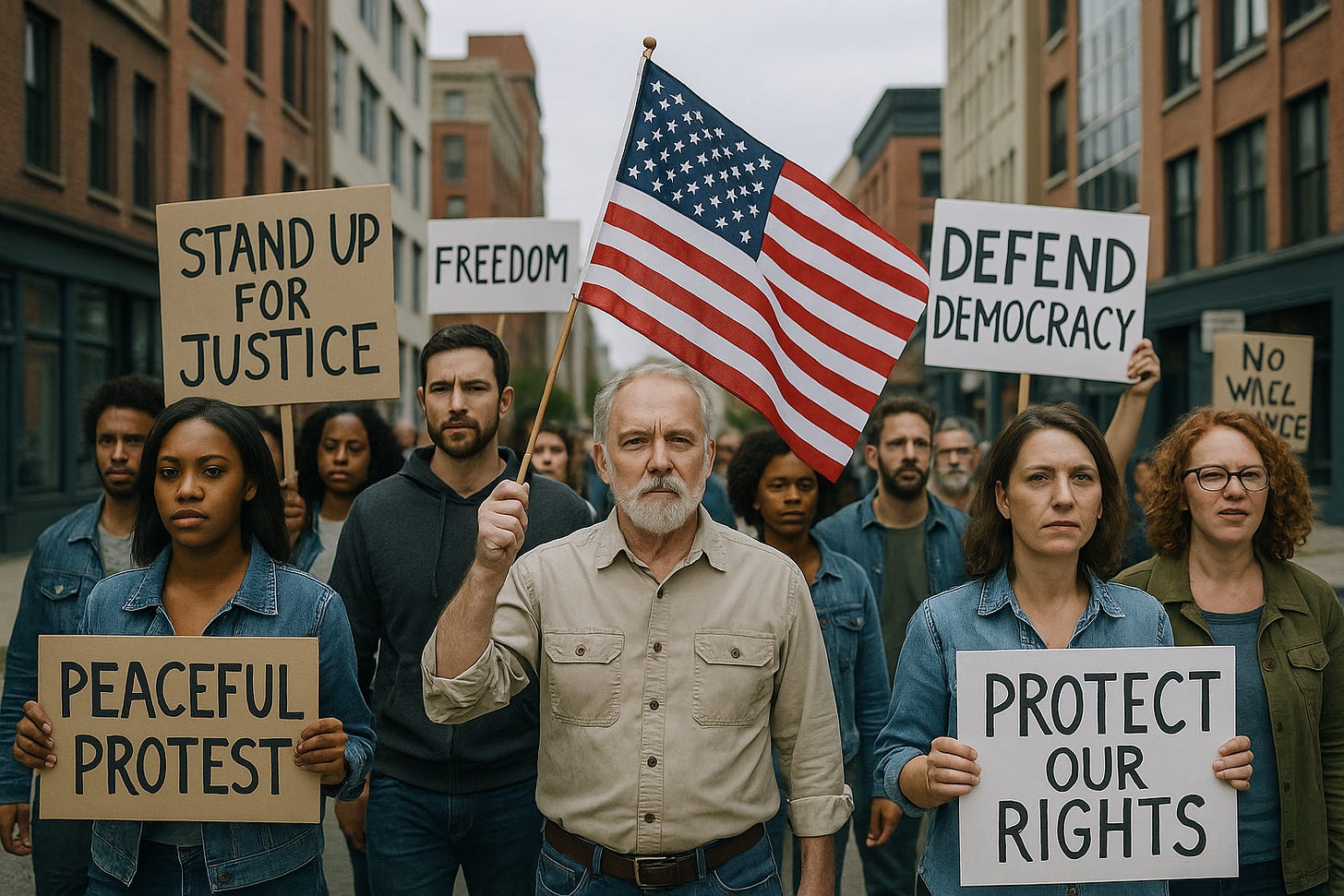Congress shall make no law ... abridging the freedom of speech ... or the right of the people peaceably to assemble, and to petition the Government for a redress of grievances.
— First Amendment to the U.S. Constitution
These words aren’t just history. They are the foundation of democracy in action.
From Revolution to Constitution
The founders of the United States knew firsthand what it meant to be silenced. Before the Revolution, British authorities often cracked down on colonists who spoke out or gathered to protest unfair treatment.
The Boston Tea Party, town meetings, and political pamphlets all played a role in building resistance. And they were all illegal under British rule.
So when the Constitution was drafted and then amended with the Bill of Rights in 1791, the First Amendment made clear: Free speech, peaceable assembly, and petitioning the government are not privileges. They are rights.
Peaceable Assembly: The People in Public
What does it mean to peaceably assemble? It means gathering without violence to express ideas, make demands, or stand in solidarity—whether in the town square, a public park, the steps of a state capitol, or even in organized marches through city streets. It includes:
Protests and demonstrations
Rallies and vigils
Union gatherings and strike lines
Community meetings and organizing sessions.
As long as it’s peaceful, it’s protected.
This right does not extend to violence, intimidation, or destruction of property. The Constitution defends nonviolent dissent—not mob rule. That’s why the peaceable part of this right matters—and why it must be defended clearly and consistently.
See the sidebar: Know Your Rights: Peaceable Protest and Public Assembly.
How the Courts Have Backed This Right
The government can place reasonable limits on the time, place, and manner of protests—such as requiring permits for large events—but it cannot restrict protests based on their message or political viewpoint.
The Supreme Court has repeatedly confirmed that the right to peaceable assembly is essential to our democracy:
In De Jonge v. Oregon (1937), the court ruled that peaceful political meetings—no matter how unpopular the message—could not be punished by the state.
In Edwards v. South Carolina (1963), the court sided with students who marched peacefully at the state capitol, declaring their arrests a violation of their First Amendment rights.
In NAACP v. Alabama (1958), the court protected the right to freely associate and assemble, striking down Alabama’s demand for the NAACP’s member list.
These cases and others make it clear that peaceful protest isn’t just allowed. It’s fundamental.
The Urgency Today
We’ve seen growing attempts to restrict public protests through new laws, aggressive policing, and threats of violence. But now is not the time to step back. It’s the time to step up.
Every significant movement for justice in our country—civil rights, peace, women’s suffrage, labor rights, environmental protection, LGBTQ+ rights—has relied on the right to peaceably assemble.
When officials try to label peaceful protests as threats …
When new laws treat dissent as disorder …
When people are afraid to gather and speak freely …
Then our democracy is at risk.
Speak. Gather. Organize. Repeat.
The First Amendment is more than ink on parchment. It’s a daily promise we must protect and practice.
So go to the meeting. March in the rally. Speak at the vigil. Join the protest.
And if someone tries to stop you, know your rights. Then use them.
Advocacy Groups
Freedoms of Speech, Press & Assembly
A ranked guide to organizations safeguarding free expression and civic participation.
A ranked guide to legal groups challenging anti-democratic policies and abuses of power.
I followed up with a reflection on what our flag should mean—and how we can reclaim it for all of us, not just the loudest voices.


